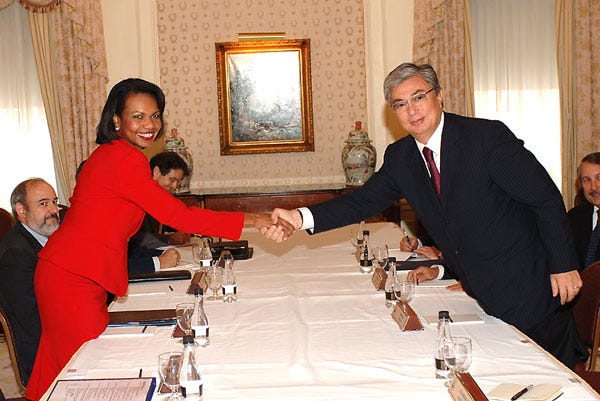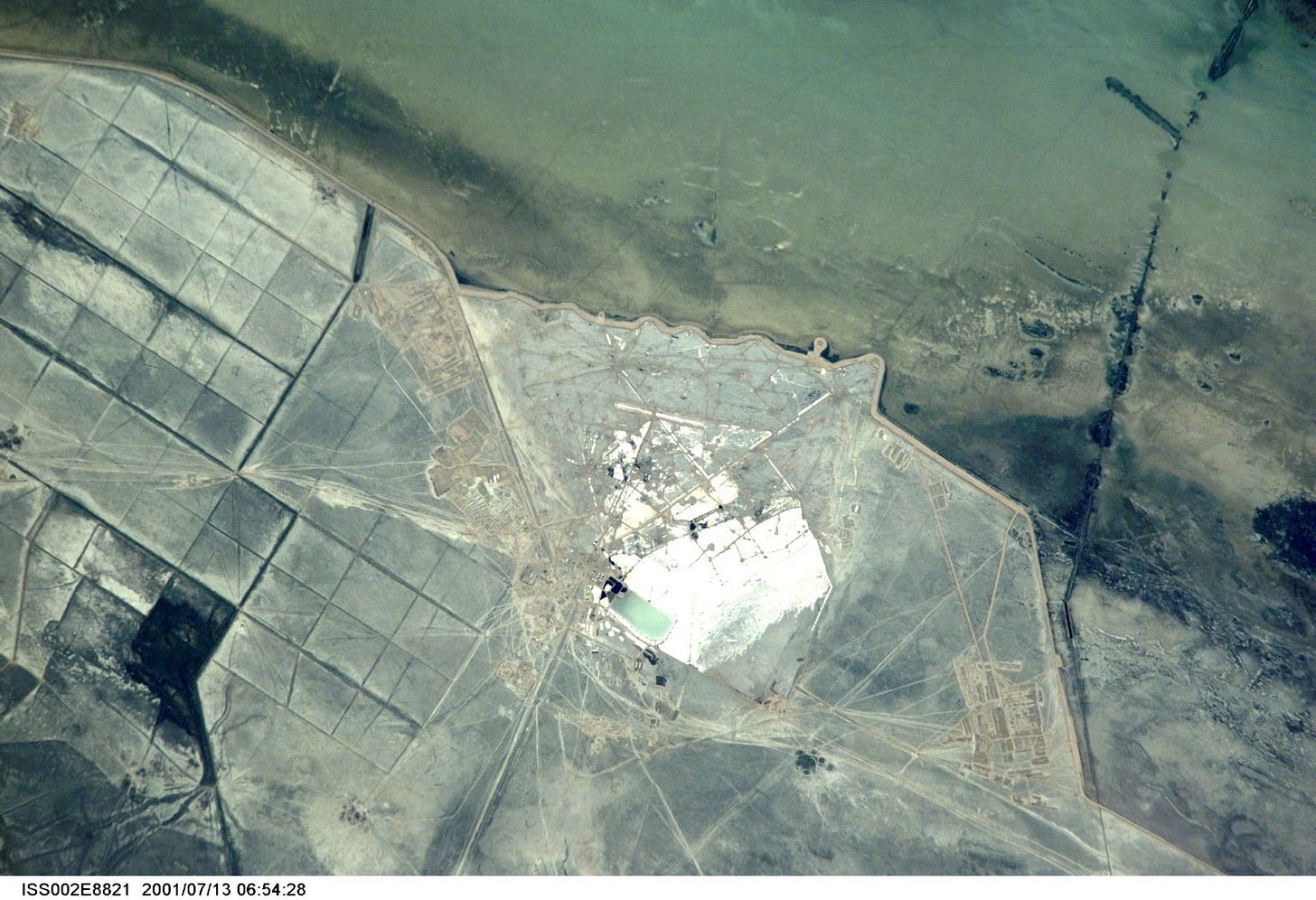The Second Caspian Derby
With billions of barrels at stake, Tokayev’s balancing act cannot last forever. But will the scales tip East or West?
In a 1997 article titled “Evolution of an Oil Rush,” author Daniel Yergin coined the phrase “Caspian Derby” to describe the race to develop the oil industry of freshly post-Soviet Kazakhstan. With American, British, French, Turkish, and Chinese interests all competing for contracts and access to oilfields, few foresaw that Russia would again come to hold power over the Kazakh oil industry. The Presidency of Kassym-Jomart Tokayev has been defined by an attempt to balance the interests of these partners. But that balancing act cannot last forever.

Today, eighty percent of Kazakh oil exports move through the Caspian Pipeline Consortium, in which Russian state-owned companies own the largest share. The CPC moves oil overland from Kazakhstan through Southern Russia to the Black Sea, where it is then shipped to countries in the European Union. Increasingly, EU buyers are disturbed that their third-largest oil supplier has a supply chain which is inextricable from Russian interests. Furthermore, the pipeline infrastructure has come under attack from Ukrainian drones, temporarily reducing the pipeline’s capacity by up to forty percent.
This is the new reality: the risk of Russian involvement in Kazakh oil is becoming untenably high. The first Caspian Derby was a race to gain access to oilfields and shoulder out Russian influence; the second Caspian Derby will be a race to build pipelines that circumvent Russian territory. History does not repeat itself, but it often rhymes.
The Shape for Things to Come
The shape for things to come is likely to utilize the Baku-Tbilisi-Ceyhan Pipeline, which moves oil from Azerbaijan through Georgia to Türkiye and the rest of the EU without ever touching Russia. Though Kazakhstan has made symbolic gestures of interest toward the BTC, the Caspian Sea separates them geographically from Azerbaijan and requires the use of tankers. If the West is to win the Second Caspian Derby, they will need to bridge the Caspian gap.

That’s where the proposed Trans-Caspian Pipeline comes in. The conditions and concerns that left it unbuilt have, in large part, ended. Turkmenistan’s interest has been revitalized by a gas realignment which favors Türkiye. Iran, which opposed the TCP by harassing research vessels in the Caspian, is weaker than ever in the wake of the Middle East crisis. And, perhaps most critically, Russia has not been so alienated from Western Europe since the Cold War. After decades of false starts, the table is finally set for the TCP to finally become a reality.
Players
The biggest winners here would be Azerbaijan and Türkiye, who would gain access to billions of additional barrels in throughput. Erdogan’s desire for close ties with Turkmenistan has led him to deport members of the Turkmen opposition back into the hands of Turkmenistan’s regime.
For their part, Turkmenistan would gain Western partners, allowing them a measure of independence from China, who is now their only gas buyer. Simultaneously, Turkmenistan’s international isolation is being eased by Oguljahan Atabayeva, a rising star who values Uzbek and Turkish collaboration. Whether or not Turkmenistan will open itself to diplomacy or will stay the course of isolationism is anyone’s guess.
The behavior of American interests in this Second Caspian Derby is likewise up for debate. While Chevron and Exxon are not likely to pull out of Kazakhstan entirely, their investment in the country has been declining since 2022. A new pipeline scheme that evades Russia might be exactly what they’re looking for. The TCP is more likely to be spearheaded by BP and France’s TotalEnergies, who both have a more direct interest in seeing it completed.
Then there’s China. As their demand for natural gas increases, their volume of imports from Kazakhstan is increasing too. Alternatively, China ties might satisfy Tokayev’s desire to diversify the country’s economy, for fear of overexploitation of resources. China’s behavior in the Second Caspian Derby will depend on the risk appetites of its Western competitors. The longer the TCP takes, the more China will do to court Kazakhstan and consolidate control.
As in the First Caspian Derby, Russia’s response may seem limited at first, but that should not be mistaken for acquiescence. Russia’s legal justifications for stopping the TCP have worn thin, and their influence over the other Caspian nations has been shattered by their post-2022 isolation. Their course of action will probably resemble their maneuvering after the First Caspian Derby: a slow creep of control through land purchases and large-scale investment by state-backed firms. But without the geographic bottleneck that defines the situation today, power and capital will no longer fall into their lap. Russia managed to play the First Caspian Derby in their favor, but they will not get so lucky again.
Did Anyone Remember to Ask Kazakhstan?
Finally, what does Kazakhstan want from the Second Caspian Derby? This is a question with two discrete answers. Tokayev and the rest of the Kazakh leadership want to preserve the balancing act of the present. The chances are slim. But the Kazakh people want something altogether different: they’ve recently petitioned the state for increased transparency and a shift toward nationalization. Though they might just stand to gain or lose the most in the Second Caspian Derby, it seems that no one is backing their horse in the derby, and no one is likely to.



